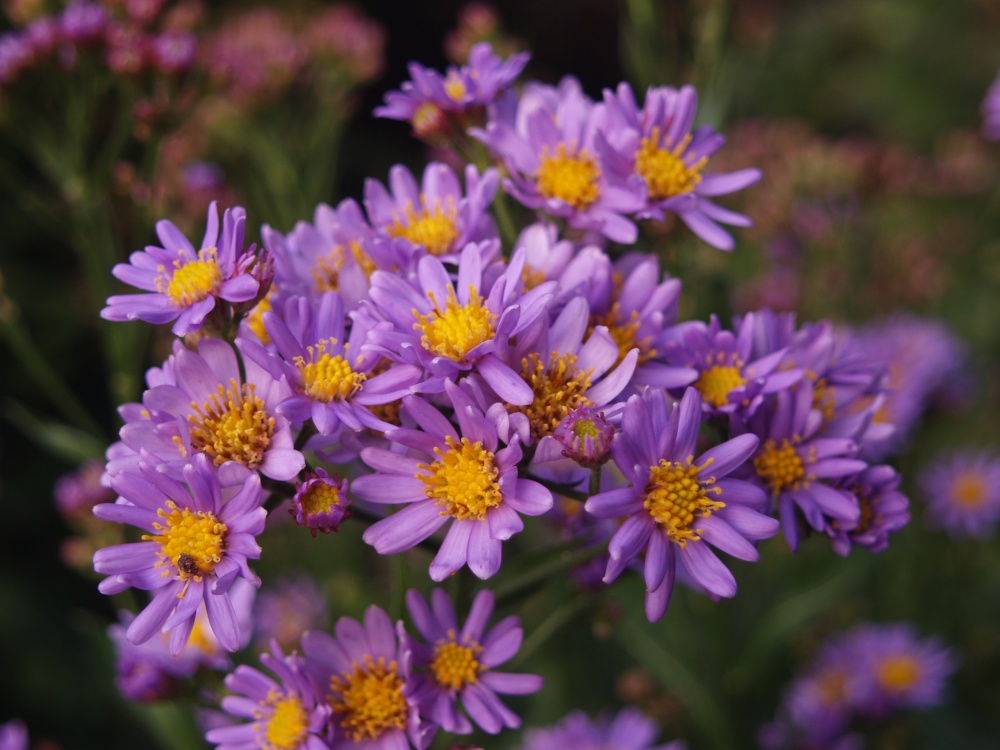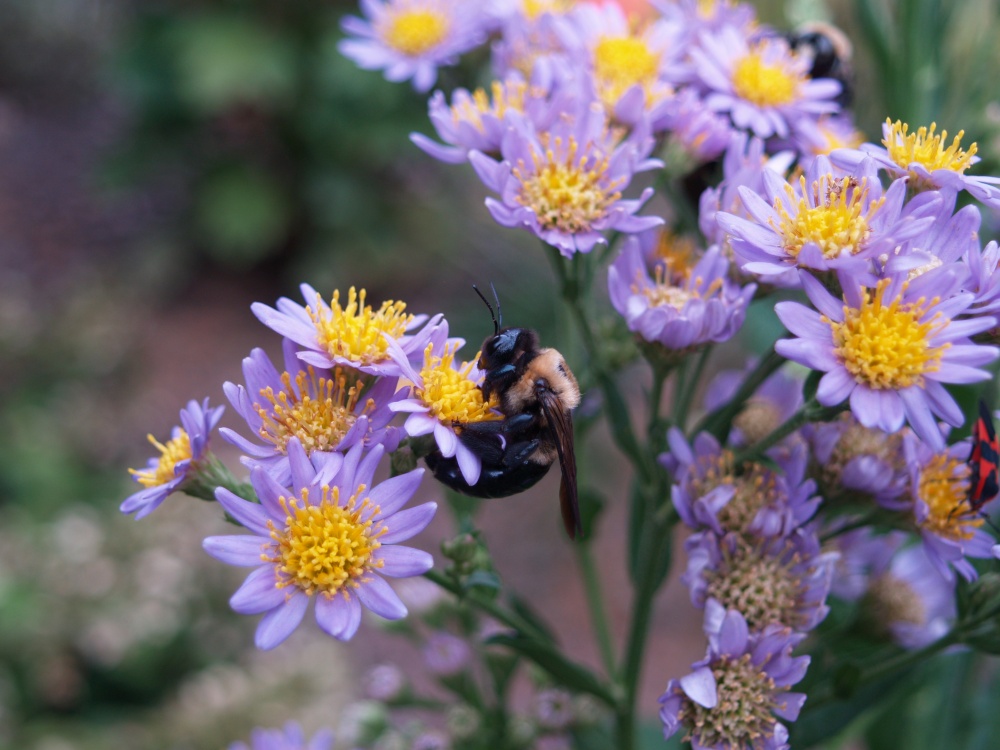The Tatarian daisy ‘Jindai’ (Aster tataricus ‘Jindai’) is positioned so that it is not obvious to any but the most determined explorer of this garden. One day (long ago it seems), the aster was near the front of the border garden, but then the large koi pond was constructed, and the front became the rear, or perhaps it’s the middle, but in any case what could be seen then can hardly be seen today. Though ‘Jindai’ is considered a dwarf by comparison to the much taller growing species, at three or four feet it is still quite tall as perennials go. But here, it is obscured by shrubs and trees planted beside the pond so that the the coarse leafed, long blooming aster can only be appreciated by wading through a dense thicket of branches.
Through several years the wide spreading paperbush (Edgeworthia chrysantha) grew far beyond expectations to crowd ‘Jindai’ until I almost gave up hope that the two could coexist. Plans to chop back the vigorous shrub were delayed once and again, and only damage from the most recent dreadful winter gave the aster a small opening to rejuvenate. The paperbush was cut by two-thirds, and now there is some space to the front, though the ‘Tardiva’ hydrangea (Hydrangea paniculata ‘Tardiva’) threatens from the rear.
Since the paperbush is reviving quickly, and with the hydrangea encroaching from the far side, there seems a limited window to save ‘Jindai’ or it will be lost. Of course, this would not be the first treasure to be lost, and not even the first to be overwhelmed by one of the paperbushes, which are excellent at sneaking up on unsuspecting neighbors who then manage for a short while until they disappear suddenly.
In a fit of motivation several days ago I dug out two thick clumps of ‘Jindai’ that were stunted by the hydrangea, but still sturdy enough that they should transplant easily. The aster clumps sat in the afternoon sun for several hours without wilting until I wandered back around to find a spot to plant them, so I’m confident they’ll handle the move without a problem. These were only a small part of the colony that the vigorous aster has grown into, but even if my attentions are diverted elsewhere for years and the old clump is lost, the two that have been moved should carry on.
While the positioning of the two new plantings is not ideal, there will be adequate sunlight and I believe the slightly moist soil will be advantageous. An osmanthus (Osmanthus heterophyllus ‘Goshiki’) and dwarf spruce (Picea pungens ‘Globosa’) are perhaps a bit too close to be comfortable that this arrangement can last another five years, but there are many situations in this garden that are too close for comfort, and these will be addressed as they become critical. Or, sometimes not.
Anyway, today ‘Jindai’ is safe in its original location, and parts have been relocated to another safe haven where the late summer and early autumn blooms can be enjoyed by the gardener and also by bumblebees that seem particularly enthralled by the small, yellow-centered blue flowers.

Jindai looks like a great fall blooming perennial. Any trouble from deer that you have seen with the plant? Thx
In my garden I spray deer repellent on many things, but not Jindai aster and it’s never been touched. The leaves are very leathery, and that doesn’t seem too appetizing. And, it is a very good early autumn blooming perennial so long as its height doesn’t stand too tall for you. It seems to me that the flowers last longer than other late flowering asters.
Hope all goes well after the move. I moved some New England asters to the hell strip along the street and they came through with flying colors. Pretty tough plants.
Ray
Since the asters were transplanted we’ve had about seven minutes of sun, no heat, and plenty of rain, so even if they weren’t tough there would be no problems. In fact, I forgot about one clump that sat on the lawn for a day before it was planted. Many perennials would not survive this, but Jindai showed no ill effect. Since these were hidden beneath a hydrangea they have no flowers, and I’m quite certain that it’s too late to start that process, but I have no doubt they’ll survive.